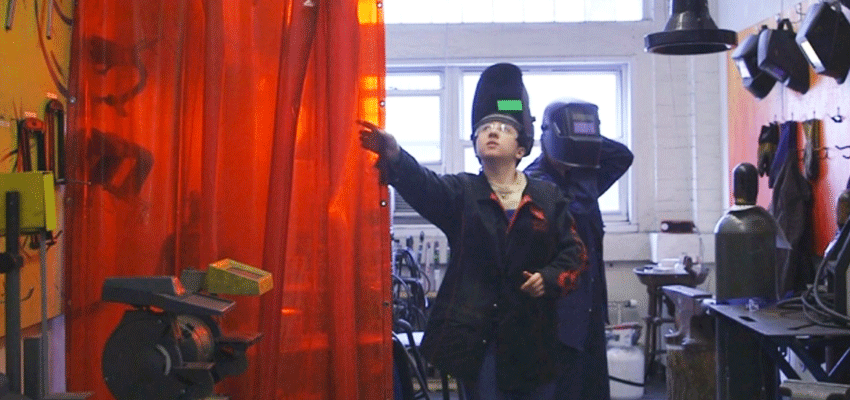In 2016, Tanzania passed a bill to cover medical expenses for expectant mothers. But pregnant women in rural parts of the country face a huge obstacle in getting the care they need: reliable transportation. Women in villages that can’t be reached by traditional ambulances have to resort to walking for hours to the nearest hospital, often while already in labor, putting their health and safety in danger.
That same year, students and instructors in the MIT D-Lab class 2.729 (Design for Scale) collaborated with community partner Olive Branch for Children to develop a solution called the Okoa ambulance. “Okoa produces a trailer that can attach to any motorcycle, providing safe transportation from rural areas to hospitals,” explains Toria Yan, a senior studying mechanical engineering at MIT.
Seven thousand miles away, Yan and her fellow students in 2.729 worked on optimizing the design of the Okoa ambulance to minimize production and shipping costs and increase manufacturability.
Throughout the fall 2018 semester, Okoa was one of four real-world projects students in 2.729 worked on — others included a floating water pump for agricultural irrigation in Nepal, an air quality detector for kitchens in India, and a plastic toilet that provides safe sanitation in densely populated areas of Guatemala.
“This class is unique because all the projects already have working prototypes,” explains Maria Yang, class co-instructor, professor of mechanical engineering, and D-Lab Faculty Director for Academics. “We are asking students to design a way to manufacture the product that’s more cost-efficient and effective.”
The idea for the class first came from staff and instructors in MIT D-Lab. “We were working with people who were trying to solve some of the biggest problems in the developing world, but we realized that just coming up with a proof-of-technology prototype wasn’t enough,” explains Harald Quintus-Bosz, lecturer at MIT D-Lab and chief technology officer at Cooper Perkins, Inc. “We have to scale the solution so it can reach as many people as possible.”
Scaling solutions for problems in the developing world turned out to be a challenge MIT students were uniquely poised to tackle. The main goal of 2.729 is to teach MIT students who already have analytic engineering skills how to design for manufacturability, come up with assembly methods for products, design in the context of emerging economies, and understand entrepreneurship in the developing world.
For Suji Balfe, a junior studying mechanical engineering, figuring out how to increase manufacturing output in developing countries resonated personally. “I was always interested in engineering for the developing world because my mom comes from a foreign country,” she says. “I thought Design for Scale provided an interesting perspective because you’re taking products that already exist in some form and making them more practical for a given audience.”
Balfe’s team worked on a product developed by the company Sensen, which uses data loggers and sensors that provide information on air quality in kitchens and help researchers determine which cookstoves are safest.
“The devices are all Bluetooth-connected, so researchers working in India can upload data to their phones and that is sent to Sensen via the cloud,” explains Danielle Gleason, also a junior mechanical engineering student. “Sensen then analyzes huge amounts of air quality data to help evaluate different cookstoves and cooking methods.”
Both the Okoa and Sensen teams were tasked with finding ways to make each product easier to manufacture and use. But as far as the location where these devices are produced, the two teams took different approaches.
“One of the first questions you have to answer when designing products for the developing world is where are you going to manufacture your device?” says Quintus-Bosz. Companies and startups have to determine whether to manufacture products globally or locally, which is partially a function of the impact objectives of the company.
For Okoa, the team focused on local manufacturing in Tanzania to create ambulance trailers. Their challenge was to find ways to optimize the design so that large parts and subassemblies could be manufactured with capable suppliers within Tanzania and then shipped to rural areas where they would be assembled locally at distribution sites. The team did this by ensuring the trailers could be flat packed and stacked on top of one another. “We optimized the design and changed the geometry of the roof so everything could be quickly assembled on site in Tanzania,” adds Yan.
Meanwhile, Sensen utilized manufacturing methods available in the United States — like thermoforming and injection molding — to redesign the enclosure for the device. “We were able to reduce costs and create a box that required minimal screws and attachments using an injection-molded bottom piece and a thermoformed top piece,” explains Gleason.
From helping people in need of medical attention in Tanzania to improving air quality in kitchens around India, students walk away from the class with a deeper understanding of the unique challenges manufacturing in the developing world poses.
“It’s clear that the students who take this class all want to make a social impact,” adds Yang. By learning how to scale solutions to increase manufacturability, that social impact can have a far greater reach in the developing world.


